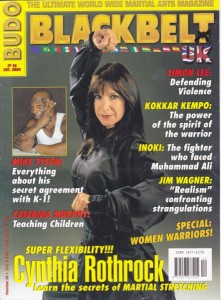Teaching Children – What you Need to Know
BUDO BLACKBELT UK Magazine, No. 36, Dec 2003
This article is about physical aspects that should be taken into consideration when teaching children martial arts and emphasizes why an adult training regime is not suitable for a young child.  Consequently, children ideally should be taught separately to adults.
Consequently, children ideally should be taught separately to adults.
Children’s bodies are different to adults because they are not fully developed in terms of physical strength, bone growth, ability to cope with intense exercise. In order to be a good instructor or coach of children, it is important to understand their limitations.
Here are some tips that you should adhere to in order to keep your children’s classes safe:
- BONE GROWTH:
- Children’s bones are not fully developed and therefore do not have the strength of those of an adult. If you are doing pad work or kicking shields, care should be taken not to expect a child to do the same number of repetitions, or carry out the exercise to the same level of intensity as an adult. This may result with damage to the bones or joints or cause a repetitive strain injury.
- Try to emphasize accuracy rather than power when kicking shields to avoid excessive strain.
- Make sure both sides are trained to avoid imbalances.
- Rather than overdoing repetitions, vary the exercise and never do more than 4 – 8 kicks or punches in a row with the same leg or hands.
- NEVER DO KNUCKLE PRESS-UPS, even with adults, as it could cause potential arthritis in the future.
- If any children experience pains in their knees or any other joints, refer them to their parents and a doctor immediately.
- Children of 3 & 4 may be too young (their bones are too soft) for martial arts training, you may find that quite often they are not covered by your insurance.
2. MUSCULAR SYSTEM, POWER & ENDURANCE
- Children are less efficient than adults in their movements, they have lower reserves of power and smaller stores of glycogen. This means they will ‘run out of steam’ quicker compared to an adult and should not be expected to have the same level of endurance as an adult. Therefore when you teach children, try to break up the exercises with frequent short rests and avoid continuous exercise without rest.
- Children have an immature temperature regulatory system and thus have a limited ability to sweat. Care should be taken to not overheat them and they are vulnerable to extremes of temperature. Be careful not to overdo the intensity of the class exercises particularly in the summer time when it is hot.
- Press-ups & sit-ups: Children’s lactate threshold, or ability to do intense exercises with one group of muscles is lower compared to adults. Therefore, do not expect them to do the same amount of press-ups and sit-ups. At this stage of their physical development it does not have much value. Limit the amount to 10 repetitions, maximum, for young children. Once again exciting drills with frequent beaks in between are the best strategy.
Once again, it really common sense, yet so many instructors continue to train young children with adults. Think carefully, as a coach, you have a responsibility to look after children’s bodies. Some key points to re-organising your class schedule:
(a) teach the children’s classes separately and group 5 & 6 year olds together and 7 – 12 year olds together, always separate to Adults.
(b) Train very you children (ages 5 – 6) for about 30 minutes
(c) Train children (ages 7 – 12) for 45 minutes




